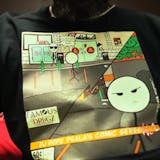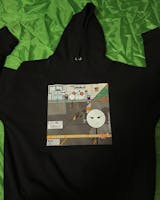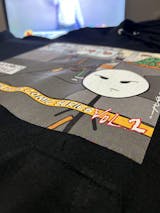When making DTF prints, it is important to adopt a sustainable lifestyle and choose environmentally friendly printing materials. In these processes, as a result of the developing technology of dtf printing, important details such as material and ink preferences, as well as the printing surface to be used, are suitable for recycling and are environmentally friendly, which are valuable for everyone.
Choosing recycled fabrics in printing projects provides great benefits in terms of environmental sustainability. It is necessary to pay attention to sustainability when printing operations. In this context, environmentally friendly prints are always of great value for the image of both the manufacturer and the brand. Recycled fabrics in DTF printing projects provide economic advantages for fabric suppliers and manufacturers. Since it is budget-friendly and at the same time thanks to environmentally friendly recycled fabrics, quality prints are offered at low costs.
Benefit of Recycled Fabrics
Recyclable fabrics are preferred because they are low cost and environmentally friendly. Economically beneficial recycled fabrics support the budget of the manufacturer and fabric suppliers. Printing using recycled fabric helps reduce textile waste. Sustainability in textile products is important for projects such as zero waste to take place in the industrial world. Fabrics suitable for recycling do not contain the natural elements necessary for the production of new fabrics. Choosing recycled fabrics instead of buying new ones is an important step for the environment. In this way, natural resources are protected and environmental awareness is increased.
By reducing the energy required for new fabrics, fabrics suitable for conversion provide energy savings in printing. Thanks to the reputation of the brand and the environmental awareness of the customers, the importance given to the environment is increasing day by day, with high sales in the evening. For this reason, dtf printing works to ensure that environmental awareness will never end and carries out printing operations within the scope of zero waste and sustainability projects.
The Importance of Recycled Materials in Dtf Printings
Using recyclable materials in DTF printing reduces costs and ensures less energy consumption. Cost-effective printing creates great satisfaction for customers. With the low cost, price performance prints and products are offered to buyers. In this case, brands have the opportunity to reach more buyers by making their names known in prints using recycled materials. Thanks to the environmentally friendly product content used in brand promotions, buyers have a safer and more environmentally friendly shopping experience. This is very important as it helps strengthen the brand and maximize its sales.
Are Recycled Fabrics Durable for Printing?
Printing with recyclable fabrics is an important factor in being environmentally friendly. The first thing that comes to mind in this regard is the durability of the fabrics in terms of printing. In terms of quality and performance, recycled fabrics are of very high quality and durable for printing. When correct printing techniques are applied to fabric surfaces with various features, there will be no cracking in the prints and the color maintains its vibrancy.
The quality of the prints is also at a high level for recycled fabrics, which can be easily transferred to DTF prints, just like normal fabric surfaces. In this case, printing can be transferred easily without any worry. Recycled fabrics are put into service in an environmentally friendly and sustainable manner without compromising the quality of dtf prints. In addition to perfect service, the prints of environmentally friendly fabrics are produced with different textures and features, and they also have a wide range of applications. High quality, durable products are made ready for brands by printing with recycled fabrics. In this way, another environmentally friendly and low-cost process is realized in DTF printing projects.








